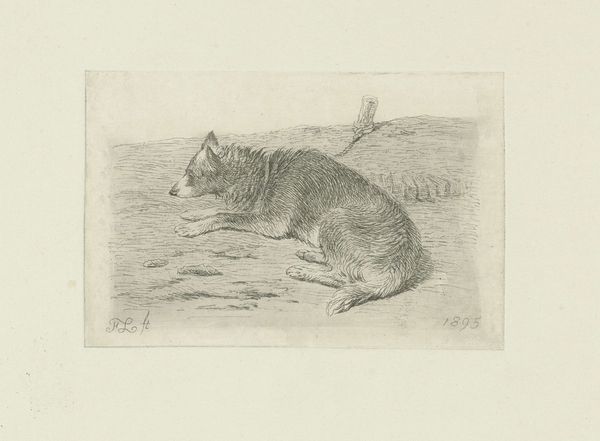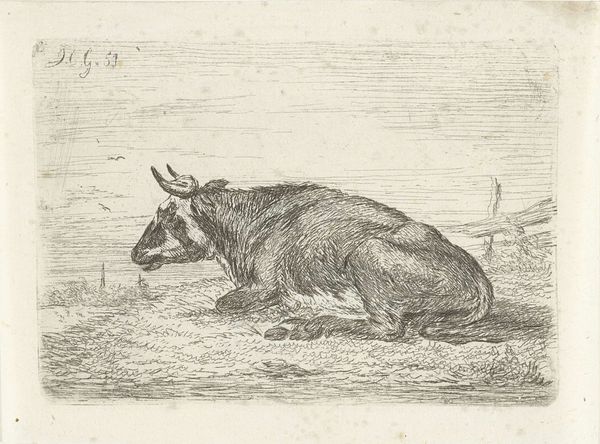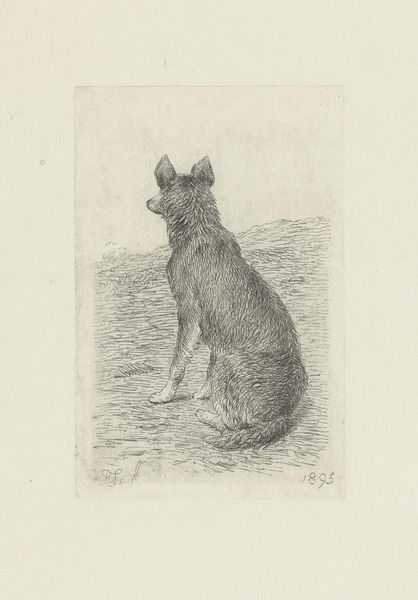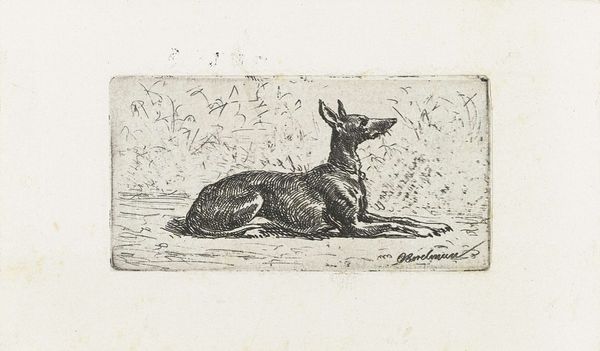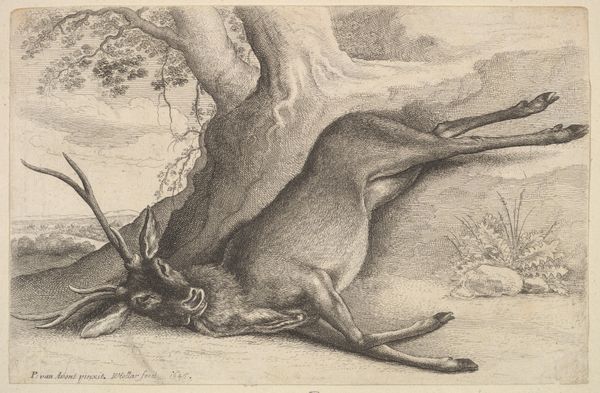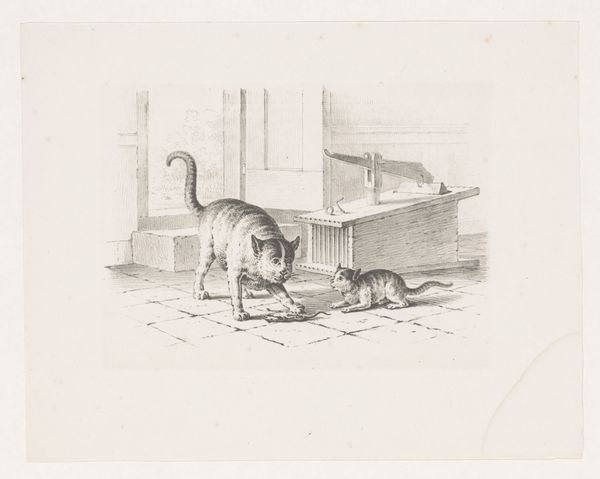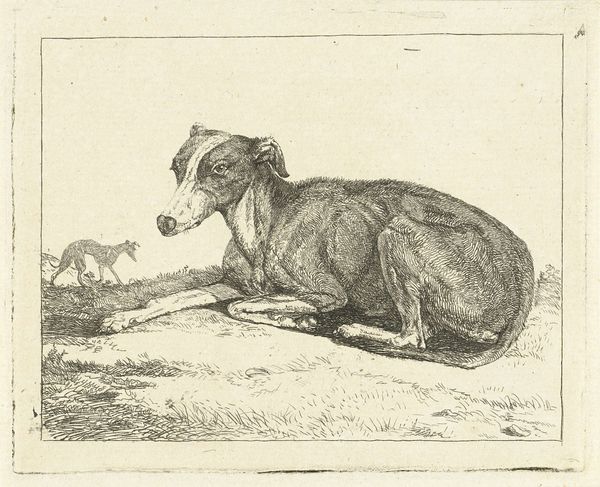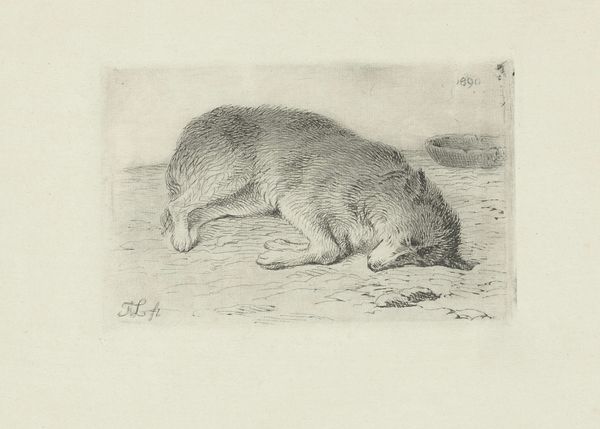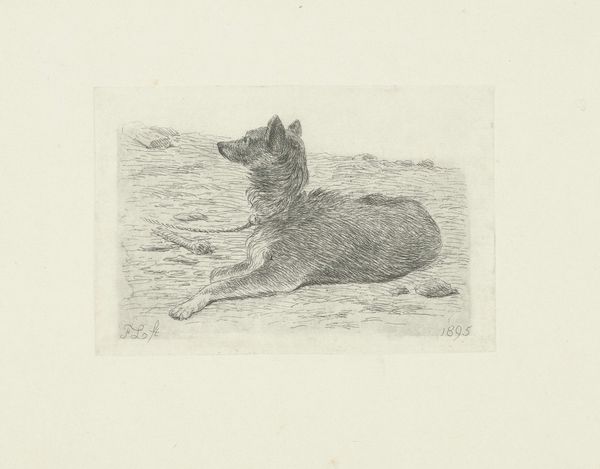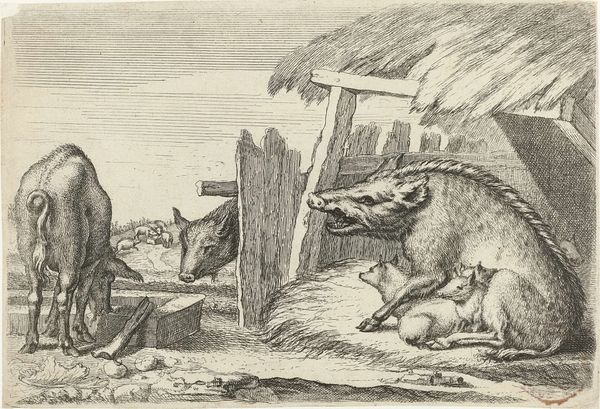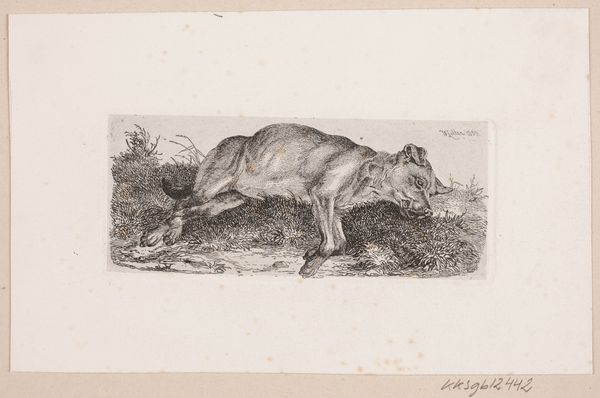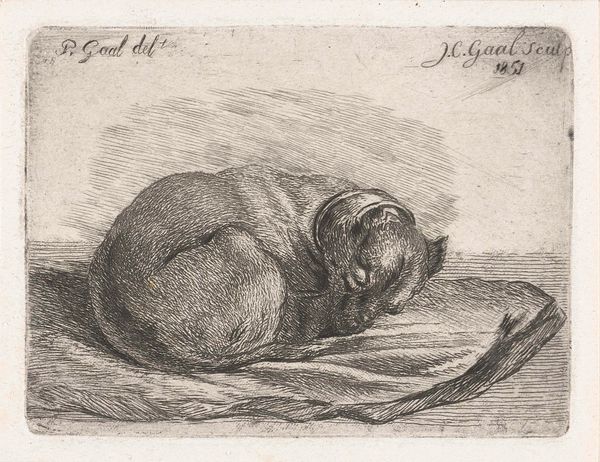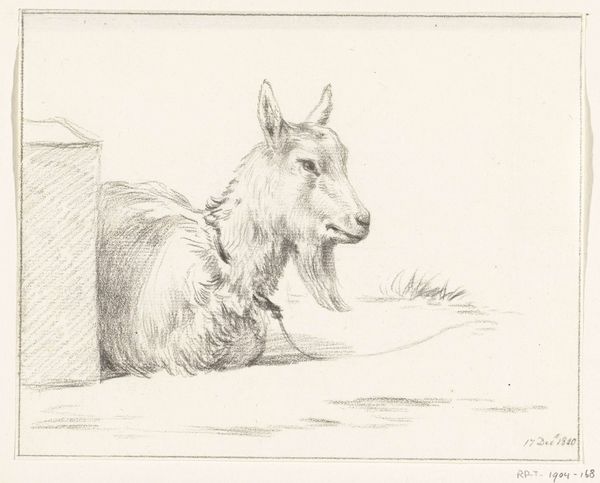
print, etching, engraving
#
animal
# print
#
etching
#
old engraving style
#
landscape
#
genre-painting
#
engraving
#
realism
Dimensions: height 103 mm, width 124 mm
Copyright: Rijks Museum: Open Domain
Curator: This is Johannes Mock's etching, "Dog on a Chain near a Kennel," which likely dates between 1810 and 1884. Editor: It’s melancholic. The tight etching lines feel oppressive, like a cage themselves. The dog's weary gaze amplifies this feeling. Curator: I think this work can be considered through the lens of power dynamics and social control prevalent during that era. The chained dog becomes symbolic of subjugation. Who has control and who doesn't, and how is this power demonstrated, is it violence, dependence, care, property, protection? What could the genre scene express? Editor: Precisely! Consider how Mock uses line variation—the denser strokes around the dog's head, neck, and the kennel's shadow draw attention. These create emphasis on confinement. The landscape behind him, rendered with more delicate lines, suggests freedom, but also his inaccessibility. It creates a palpable tension. Curator: Looking closely at the background, I can’t help but wonder if the artist wants us to think about the rural to urban migration taking place. Or about our human impulse to master animals, other humans, the natural world. This simple scene could tell of displacement and industrial development. Editor: The simplicity also enhances the impact. We see a modest dwelling, a simple chain, a solitary bowl... This minimalist visual vocabulary focuses our attention on the stark reality of the dog's existence, stripped bare of sentimentality. It pushes the work into a deeper level of reflection. Curator: It reminds us that artworks don't exist in vacuums; they're echoes of their time. A seemingly simple scene offers us much more complex reflections on freedom, the exploitation of certain beings and dependence. Editor: Agreed. The rigorous etching method forces us to slow down, look carefully at how the composition itself reflects an idea about societal power. Curator: I hadn't quite registered its formal intensity, seeing past what I had prejudged was a plain image. Thank you. Editor: Thank you, your reflections on context open new pathways of interpretation for this modest image.
Comments
No comments
Be the first to comment and join the conversation on the ultimate creative platform.
